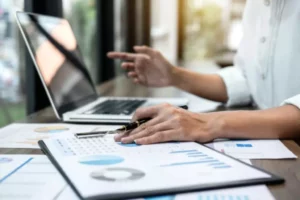Content

The balance sheet is then reviewed and signed off on by your company’s management. It might still just look like a whole bunch of numbers, so we’re going to show you how to read your balance sheet. The structure of a balance sheet will be the same for every business. It might also have liabilities like loans it needs to pay back and bills it owes to suppliers.

It also has pre-set items for current assets, fixed assets, current liabilities, and long-term liabilities so, you won’t have to add them in yourself. A bank statement is often used by parties outside of a company to gauge the company’s health. Balance sheets allow the user to get an at-a-glance view of the assets and liabilities of the company.
Assets = Liabilities + Owner’s Equity
Guidelines for balance sheets of public business entities are given by the International Accounting Standards Board and numerous country-specific organizations/companies. A small business requires a balance sheet to get insight into https://www.bookstime.com/articles/balance-sheet-basics its financial statement and overall value. It helps the owner keep track of the company’s finances, including assets, liabilities, and owner’s equity. Most income statements include a calculation of earnings per share or EPS.
As a business owner, now you know how to read a balance sheet, we’re going to show you how to apply this information to gain valuable insights into your company’s position and performance. These are assets that can be converted into cash within one year, such as cash, petty cash, accounts receivable, marketable securities, and inventory. Remember, your assets in a balance sheet represent your https://www.bookstime.com/ company’s resources, things of value that it owns and has at its disposal to generate income or meet obligations. You will find that there are many companies which do not have long term borrowings (debt). While it is good to know that the company has no debt, you must also question why there is no debt? Or is it because the company is not taking initiatives to expand its business operations.
Understanding a Balance Sheet (With Examples and Video)
It is a crucial statement for other financial statements and serves as a bridge between profit and loss statements and cash flow. In addition, it is a snapshot of the firm’s health and current financial position on a specific date. A balance sheet, in simple words, tells us how much a company owns and how much it owes. The SEC’s rules governing MD&A require disclosure about trends, events or uncertainties known to management that would have a material impact on reported financial information. It is intended to help investors to see the company through the eyes of management.
It is also a condensed version of the account balances within a company. In essence, the balance sheet tells investors what a business owns (assets), what it owes (liabilities), and how much investors have invested (equity). Joe also needs to know that the reported amounts on his balance sheet for assets such as equipment, vehicles, and buildings are routinely reduced by depreciation. Depreciation is required by the basic accounting principle known as the matching principle. Depreciation is used for assets whose life is not indefinite—equipment wears out, vehicles become too old and costly to maintain, buildings age, and some assets (like computers) become obsolete.

